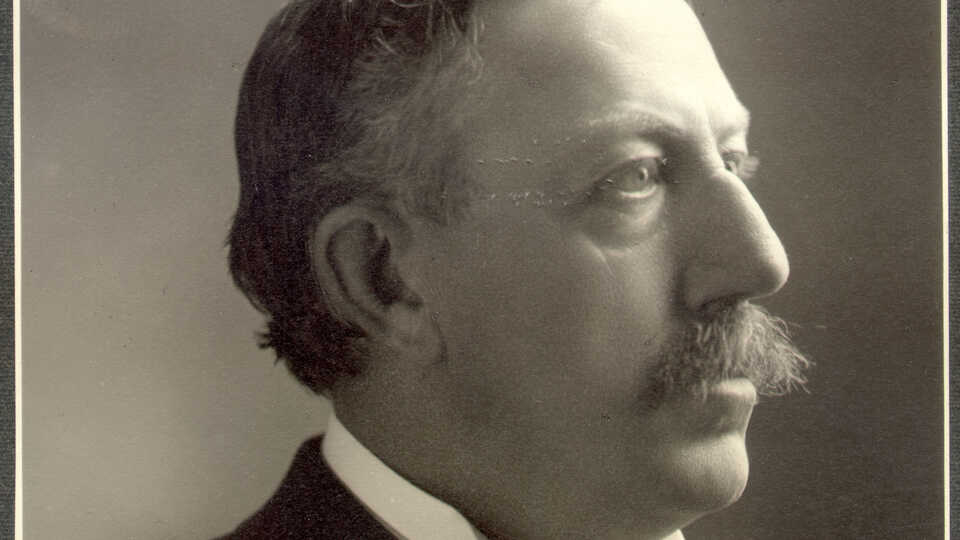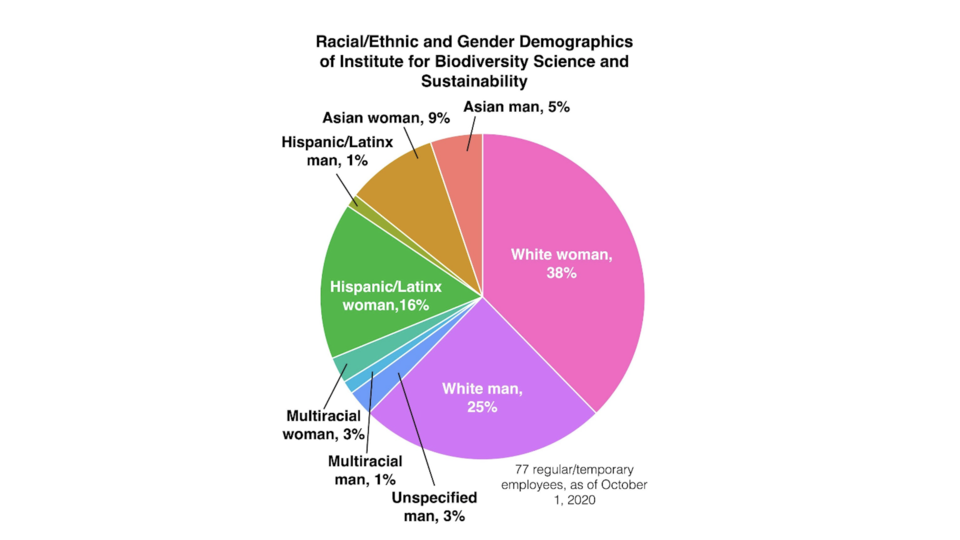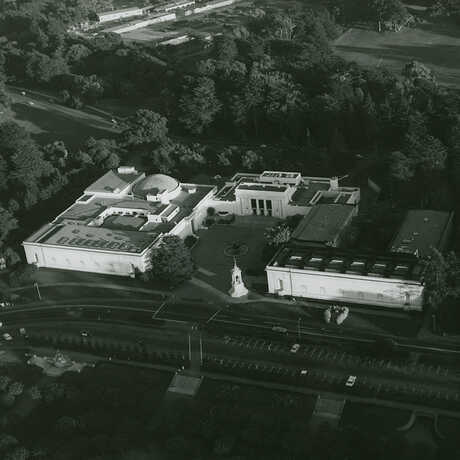Founded in 1853, the Academy Library is a research library devoted to natural history and the natural sciences. Explore our extensive collections, including rare books, serials, maps, and photography.

By Katherine Montana
David Starr Jordan was well known for being a prolific ichthyologist and the president of the California Academy of Sciences. Here we investigate his role as a eugenicist, as well.
David Starr Jordan (1851–1931) was a widely revered ichthyologist, founding president of Stanford University, and intermittent president and curator of fish at the California Academy of Sciences. Perhaps less well-known, however fairly well-documented, was his leadership role in the American eugenics movement. Jordan believed that people with traits he deemed desirable deserve to have children. He thought that people he deemed "unfit" should not reproduce and, in many cases, should undergo compulsory sterilization—or be surgically prevented from having children, even against their will. In addition to his beliefs and practices rooted in eugenics, Jordan held other racist, sexist, ableist, and colonialist ideas. Our research into the archives at the Academy and at Stanford revealed a fuller picture of the life of Jordan and his influence that affects the Academy and science as a whole to this day.
Jordan's beliefs in context
Jordan’s line of thought began in the context of his teachers and other eugenicists. One of Jordan’s mentors was Louis Agassiz (1807–1873), who believed in a natural hierarchy between races. Agassiz did not accept the theory of evolution and promoted polygenism, the belief that all races derived from different species and that the Black race in particular is the most inferior and least intelligent. Agassiz looked up to Georges Cuvier (1769–1832), the chief surgeon to Napoleon Bonaparte. Cuvier used the body of Saartjie Baartman, a South African woman who was put on display in England as “The Hottentot Venus,” to conclude that Black people were “sexual animals.” Cuvier dissected Baartman’s brain and genitals after her death, and they were put on display at the Musée de l’Homme in Paris until 1976. The timing of Jordan’s career overlapped with that of Francis Galton (1822–1911), who is considered the father of eugenics and coined the term in 1883. Galton popularized eugenics in Europe, but it was Jordan who influenced the rise of eugenics in the United States. Jordan put Galton’s ideas into his lectures at Indiana University in the 1880s.
Jordan the eugenicist
Jordan authored many texts and presented on eugenics ideas. One of his most well-known texts that he would also speak on is The Human Harvest: A Study of Races through the Survival of the Unfit. Jordan believed that war promoted “reversed selection [and] dysgenics” for taking the best and brightest young men (in his eyes) out of the reproducing population when they are killed in combat. In The Human Harvest, he also described an Italian town called Aosta where people of various disabilities are in community as “a veritable chamber of horrors” with “creatures” with “less intelligence than the goose…less decency than the pig.” He named “animal pauperism” as the result of unfit animals (and people) being allowed to reproduce, producing so-called degeneracy. Jordan supported the education of women but for the purpose of them becoming educated enough to raise worthy children.
Not only did Jordan believe in eugenics, but he took action toward enforcing its ideals. He served as one of the vice presidents at the first International Eugenics Congress in 1912 and was the president of the eugenics committee of the American Breeders’ Association. In 1909, California legalized forced sterilizations for people the state deemed unfit. While we cannot say whether Jordan directly worked toward passing the law, his promotion of eugenicist beliefs and sphere of influence undoubtedly affected the passing of the law. In 1928, Jordan served on the inaugural board of trustees of the Human Betterment Foundation, which campaigned for compulsory sterilization. The committee to rename Jordan Hall at Stanford University concluded, “Jordan was not just endorsing commonplace positions but rather was a leader in moving society in the misguided direction of implementing eugenic policies.”
We name just some of Jordan’s ideas and actions in the realm of eugenics; he spoke disparagingly of specific racial groups as well. We are not the first to document or try to bring light the story of David Starr Jordan’s beliefs and practices of eugenics. Lulu Miller's book Why Fish Don't Exist features a chapter on Jordan's eugenicist beliefs and practices. Students from Stanford University organized an effort to rename Jordan Hall and have an extensive list of the egregious behaviors and beliefs that Jordan held.
Jordan's impacts on science and the Academy today
Simultaneous to his eugenicist activities, Jordan served in academic leadership roles and conducted ichthyological research. He described many of the fish species in North America, Hawai`i, and Japan. Jordan was the founding president of Stanford University, serving in that role from 1891 to 1913. He also was intermittently in office as the president of the California Academy of Sciences between 1896 and 1912. As a curator of ichthyology at the Academy, he collected at least 1,909 type specimens still in our ichthyology collections. Jordan was a member of the Academy from October 5, 1891 when he arrived in California and was elected an honorary life member on January 3, 1898. Through these roles, he exerted power that influenced generations to come.
While Jordan lived and worked at the beginning of the last century, the effects of his ideas reverberate today. The students Jordan hired and taught sometimes went on to be eugenicists themselves. Paul Popenoe, affiliate of the Human Betterment Foundation, co-authored Sterilization for Human Betterment and edited the American Breeders’ Association’s Journal of Heredity. Popenoe and the Human Betterment Foundation also praised the legalization of eugenic sterilization that took place in Nazi Germany. Another of Jordan’s students, Leo Stanley went on to become the medical director of San Quentin State Prison and performed at least 600 sterilizations there, citing Jordan in his motivations for performing eugenic sterilizations in the prison.
Some of Jordan’s students and contemporaries were not eugenicists but reflected the accepted demographics of scientists at the time—mostly white, mostly men. He taught Barton Warren Evermann, who was an influential executive director of the Academy from 1914 to 1932. Rosa Smith and Carl H. Eigenmann were ichthyologists at the Academy and students of Jordan’s. Frank Mace MacFarland became the director of Stanford’s Hopkins Marine Station between 1910 and 1917 and the executive director of the Academy from 1934 to 1938. Jordan taught Alvin Seale, who was the first superintendent of the Steinhart Aquarium. Hence, Jordan’s students went on to be in positions of power, hiring mentees themselves. Starting with a narrow community of people accepted into a profession begets a narrow community who continues on in that profession. Just as with the influence of Cuvier to Agassiz to Jordan, Jordan’s lineage is an example of what Michael Polanyi calls “the apostolic succession of scientists.” While we have made progress in diversifying the Academy’s research staff since Jordan’s time, it is not difficult to see why the demographics of researchers are still majority white (63%).
Jordan was the leader of an academic regime that was based on the closeness of colleagues rather than their academic merits or moral conduct. For instance, Jordan covered up an affair that a colleague, Charles Gilbert, had with a Stanford student because he was friends with Gilbert and did not want to lose Gilbert's academic expertise at the university. Thus, people whom Jordan saw as the best and the brightest (often white men) got a seat at the table and opportunities to advance their careers, while others were left behind, even if they had done work contributing to Jordan’s success as an ichthyologist. Jordan was not one to properly credit his assistants, instead saying, “Of the hundred or more new species of rock-pool fishes lately secured by the writer in Japan, fully two-thirds were obtained by Japanese boys. Equally effective is the ‘muchacho’ on the coasts of Mexico.” The Japanese and Mexican men were not named nor given further opportunities to study ichthyology through an academic lens, but Jordan could not have become such a prolific ichthyologist without them.

A problematic legacy
Jordan is just one man who spoke often about his beliefs which today we recognize as egregious. His sphere of influence and peers also contributed to creating a scientific enterprise that we want to change today. We must continue to examine and learn from the truth of the history of science so we can both reconcile its wrongdoings and forge a future of science that is innovative, invites participation, and humanizes its practitioners.
References
Ball, N. “Galton, Sir Francis.” Eugenics Archives. Social Sciences and Humanities Research Council of Canada. https://eugenicsarchive.ca/discover/tree/518c1ed54d7d6e0000000002. Accessed 20 May 2022.
“First International Eugenics Congress, London, July 24th to July 30th, 1912, University of London, South Kensington: Programme and Time Table." Internet Archive. https://archive.org/stream/b22439833/b22439833_djvu.txt. Accessed 20 May 2022.
“The Hottentot Venus Is Going Home.” 2002. The Journal of Blacks in Higher Education, 35: 63–63.https://doi.org/10.2307/3133845.
Jordan, D.S., and E.B. Krehbiel. Syllabus for “Lectures on International Conciliation.” Leland Stanford, Jr. University.
Jordan, D.S. 1907. The Human Harvest: A Study of the Decay of Races through the Survival of the Unfit. American Unitarian Association.
Montana, Kate. 2022. The Problematic Legacy of David Starr Jordan, IBSS Seminar. California Academy of Sciences. https://www.youtube.com/watch?v=ZwTl73j6pBc
Miller, Lulu. 2020. Why Fish Don’t Exist. Simon & Schuster.
Grunsky, C.E. “Report of the President of the Academy for the Year 1931.” Proceedings of the California Academy of Sciences, Fourth Series 20(12): 473–482. https://www.biodiversitylibrary.org/item/22488.
“Reports of the Advisory Committee on Renaming Jordan Hall and Removing the Statue of Louis Agassiz.” 14 Sept. 2020. Stanford University.
Saini, A. 2020. Superior: The Return of Race Science. Fourth Estate.
Stanford Eugenics History Project. Stanford University. https://www.stanfordeugenics.com/. Accessed 20 May 2022.

